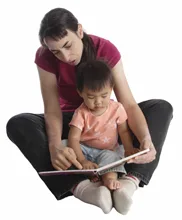“My parents loved me. And I love them. But there have been points in my life where that wasn’t enough,” says Brooklyn resident Kimberly Langner, who was adopted from South Korea and raised in Ohio. Love isn’t enough for any family, she says. There will be problems that can’t be smoothed over by good intentions. For families who have adopted a child of another race, it is especially important to be aware of love’s limits.

Adopting across color lines is common enough these days. But research suggests it hasn’t gotten any easier. “No matter how much they loved me, no matter what they said, I knew that I was different and that I couldn’t be the same, ever,” Langner says. “Sometimes they tried to convince me otherwise. Or they would tell me that I was different, but that the difference didn’t matter. But that’s unrealistic and untrue. I am different. To deny that was dishonest and confusing.”
Tami Winfrey Harris, editor of the Anti-Racist Parent blog, affirms that each child has unique needs tied to her personality, abilities, and race. “It’s not that black children – or Asian or Hispanic or Native American – are so different from their Caucasian counterparts; it’s that the way people react to them is different,” she says. “Adoptive parents should not make the mistake of believing that children of other cultures will move in the world in the same way that they do.”
John Raible, assistant professor of diversity and curriculum studies at the University of Nebraska-Lincoln, notes that parents might become aware of this when strangers ask to touch their child’s hair, or ask, “Where did you get your son?”. “To not engage in discussion of race is to reproduce the battle from 40 years ago,” he says. “The experience of being a black or an Asian child in a white community is still about race and white privilege.”
Langner remembers a circle of girlfriends playing with her hair, braiding it and brushing it for hours. They were admiring it, cooing over its thickness and rich color. But to Langner, it was a deeply painful experience. “I spent hours trying to make my hair curly,” she recalls. “I tried to dye it with lemon juice and bleach.”
She laughs as she tells these stories, but at no point does she lose her intensity. “People used to think I was from China. One year, for Halloween, I was a geisha. It would have been more of a costume for me to go as a cheerleader or Barbie doll. I could have gone as anything: it was all a costume, everything was a mask.”
There is a lot of talk in parenting about identity and autonomy, about personality development. Langner’s experience sharpens the edges of those concepts. “But do I believe there are right ways to do it?” she asks. “Absolutely.”
Consider this advice regarding raising a child of a different race.
• Live in a community of color. “Normalize race. Make it a shared experience,” says Langner. “If you are a white parent, accept that you can’t share that with your child, and find people who can.” Raible suggests that seeing others on the street is not enough; move into a community, join a church. Nurture longstanding and loving relationships with people of color.
• Start at the beginning. There are a growing number of resources, storybooks, and educational tools that seek to normalize adoption and celebrate race. Invest in people, customs, books, and education that honor your child’s race.
• Learn about racism and how it is manifested. Colorblindness is a wonderful idea for a perfect world. But as we aren’t living in that perfect world yet, it is vital that adoptive parents educate themselves about white privilege, explore their own racial identity, and determine how they can be white allies.
• Recognize your limits and get help. Whether learning to care for your child’s hair or to engage with those strangers who ask where your child came from, finding help is crucial. If you need counseling, get counseling. If you need friends of color who can listen and understand, find them. If you don’t know how to answer your child’s questions, find people who can.
• Don’t buy into the idea that “things are different now.” Culture camps are out, diversity is in. But, according to Raible, “Research shows that things aren’t so different now. The experience a child has depends on the context, not on the decade.” Honor the love that you have for your child by integrating race into your lifestyle.
Resources
• www.antiracistparent.com
• Outsiders Within: Writing on Transracial Adoption, Jane Jeong Trenton, Julia Chinyere Oparaj and Sun Yung Shin, Eds
• Evan B. Donaldson Adoption Institute, www.adoptioninstitute.com
• Pact Adoption Alliance, www.pactadopt.org
KARIN L. BURKE is a Brooklyn-born freelance writer with a focus on social justice issues.





















